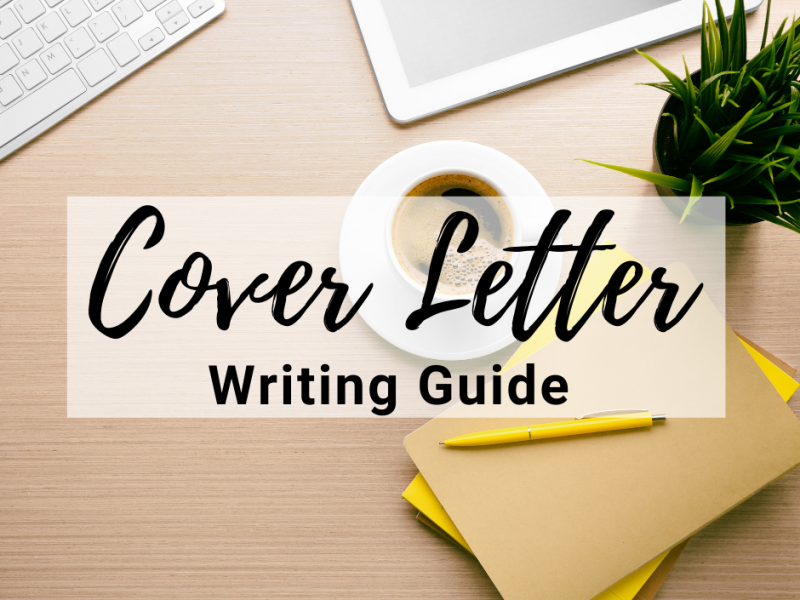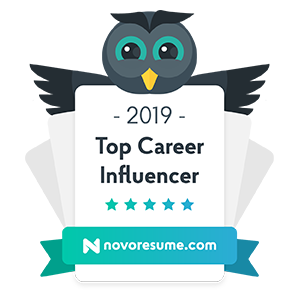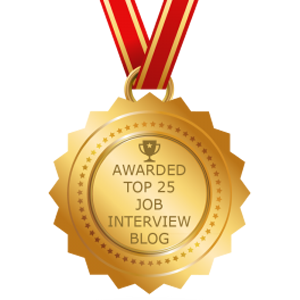Updated December 2020
The cover letter is an essential part of a strong job application but many job seekers fail to get it right. In this blog post I’ll share the latest tips and trends for creating an attractive cover letter. I’ll also share all of the necessary cover letter parts.
Is a cover letter necessary? This is one of the most common questions I receive from job seekers. Job seekers are always hopeful that the ease of online applications has somehow eliminated the need for cover letters. Unfortunately, this is not the case. The cover letter plays a critical role in the application process, yet it’s a document that is often avoided. From writing resumes and cover letters for hundreds of clients, I’ve learned that the real reason behind cover letter angst, comes from job seekers not understanding how to write one. Even if you’re not thrilled about writing a cover letter, there are some easy ways to overcome this application challenge. With the right structure, a little creative writing and well-placed keywords, you can have a winning cover letter in no time.
Why the Cover Letter is Necessary for Competing Against Other Candidates
We all know the importance of a first impression, especially when it comes to winning over a hiring manager. Think of it like this: When you go into an interview, you make sure you are properly dressed. You probably researched the company, practiced interviewing, and even pay particular attention to your firm handshake. The cover letter serves the same purpose. It immediately shows the hiring manager who you are and communicates that you are ready to get down to business. A poorly constructed cover letter or lack of cover letter will likely land you a spot in the “you’re not a fit, but thanks for your interest” pile.
Current Trends & Cover Letter Best Practices
Similar to crafting the perfect resume, cover letters should follow current trends and best practices. While the cover letter information may feel similar to your resume, in terms of your accomplishments, it’s important that you avoid copy/pasting your resume information into the letter.
As a rule, cover letters should be fairly brief, but provide a quick glimpse into the following:
- Who you are
- Why you are sending your resume
- Why you are qualified for the job being advertised
- Career highlights & accomplishments that illustrate and support your qualifications
How to Format Your Cover Letter Correctly
The cover letter should be 1-page in length. There is no exception to this rule. Anything over 1-page is too lengthy. In terms of margins, header, color, and font, I recommend using formatting consistent with your resume branding. Consistency is the key here. Consistency throughout documents will send a potential employer a message that says that you are someone who pays attention to detail. The font size can vary a little, but the font type should remain the same. You want to deliver branding that translates seamlessly across your cover letter and resume and this can only be achieved by consistency. You’ll also want to keep in mind the power of the visual aspect associated with formatting. If the document is visually unappealing at first glance, due to poor layout, you could ruin the power of your first impression. The best content in the world won’t save you if the visual formatting is off!
What Parts to Include in Your Cover Letter
Similar to your resume, having a sound structure is critical to achieving your goal of landing an interview. The structure of a cover letter is important to understand because it will be the roadmap to keep you from including either too much or too little information about yourself. Remember, the cover letter is a teaser. It’s meant to capture the reader’s attention and encourage him or her to read the resume. It’s not necessary or recommended to give away all the details. Here’s the structure I recommend:
- Date
- Company Name
- Address
- Salutation
- Opening paragraph stating the role you applying and maybe a short sentence that explains how you found out about the positon.
- Paragraph on why you are the perfect candidate
- 3-5 bullets on highlights of your experience and / or accomplishments.
- Closing paragraph, which asks for an interview.
- “Thank you” for the hiring manager’s time and consideration.
What to Include in the Opening Paragraph
The opening paragraph should be short, sweet, and to the point! Start by immediately stating the company and position for which you are applying. It’s not recommended to leave the employer or recruiter guessing (because they won’t – they’ll trash it). Words of wisdom for your cover letter AND resume: “A confused mind never buys!” Therefore you should mention the role exactly as stated in the job description
What to Include in the Body
In this part of the cover letter, you should explain in additional detail why you are qualified for the role. An easy way to do this is by summing up the amount of relevant experience you have in the field. I recommend reviewing the job posting to make sure that you working in enough keywords while you’re going through the process. In fact, if you are creating a cover letter for one specific position, I recommend using the job posting to aid in tailoring the cover letter.
What to Include in the Closing Paragraph
Thank you’s are important so be sure not to overlook them in your communications with hiring managers. Thank the hiring manager for his/her time and consideration and use “Sincerely,” or “Best Regards,” followed by your first and last name.
Don’t Be Afraid to Ask for an Interview
If you’re feeling bold, this is the part of the letter in which you should ask the hiring manager for an interview. This may sound a little too straightforward, but sending a resume without requesting action will not be a strong enough message to express if you really want the job. Remember, the end goal here is to land an interview so you can continue to sell yourself in person. State that you would like the opportunity to meet them to discuss the opportunity and share details on how you can be reached.
How to Send Your Cover Letter
You want to be sure and read the job description in full for any instructions around sending your application. Following instructions is one of those “make or break” nuances when competing against other candidates so be sure you are aware of how the hiring manager would like to receive your resume and cover letter (and follow accordingly)! If you are sending the cover letter via email, then it’s best to copy / paste the cover letter directly into the body of the email and also attach the cover letter and resume. This will give the employer the option to save the cover letter into their files (which will be much appreciated).
If you’re hoping to present the right resume and cover letter brand and land a job in record time, check out the Job Search Accelerator. In this budget-friendly job landing program you’ll have access to all of Noelle’s expert resources including optimized resume and cover letter templates, networking scripts and templates, LinkedIn optimization courses, interview answer scripts and more – everything you need to feel confident, navigate the job search successfully, and put your best foot forward as an applicant.


 Join These LinkedIn Groups to Find More Recruiters
Join These LinkedIn Groups to Find More Recruiters


